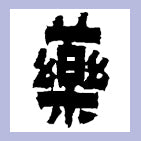What is heat in Traditional Chinese Medicine?
In Traditional Chinese Medicine (TCM), "heat" refers to a series of symptoms caused by excessive internal fire or deficiency fire within the body. Here's a detailed explanation:
Concept and Causes
- Concept: In TCM, "heat" is often associated with an imbalance of Yin and Yang, where Yang energy is overly dominant.
- Causes: Heat can arise due to various factors, such as external invasion of fiery or hot pathogens, emotional stress, improper diet, and disruptions in the harmony of the internal organs and their Yin-Yang balance.
Manifestations
The manifestations of heat in the body can be divided into two main categories: excess heat (实热) and deficiency heat (虚热).
- Excess Heat: Symptoms include fever, red face and eyes, thirst with a preference for cold drinks, red tongue with yellow and thick coating, and a rapid pulse.
- Deficiency Heat: This may be accompanied by hot flashes, night sweats, restless sleep, a red tongue with little coating, and other discomforts.
Diagnosis and Treatment
- Diagnosis: Diagnosis is typically made through a combination of physical examination (such as temperature measurement), tongue diagnosis, pulse diagnosis, and possibly laboratory tests (such as blood tests, urine tests) and imaging studies (such as echocardiography, chest X-rays) to further assess the condition.
- Treatment: Treatment may involve the use of traditional Chinese herbal remedies that clear heat and toxic materials, such as Yinqiao Powder and Gegen Qinlian Decoction. Acupuncture therapy, such as stimulating specific acupuncture points like Quchi (LI11) and Hegu (LI4), may also be employed. Additionally, patients are advised to avoid spicy and greasy foods, maintain adequate rest, and promote overall bodily recovery.
Relationship with Fire
In TCM, there is a close relationship between "heat" and "fire".
- Heat: Purely an evil factor, with no association with vital qi.
- Fire: Can refer to either the vital qi of the body (called "little fire") or a pathogenic factor (called "vigorous fire").
Pathological Characteristics of Heat
- Burning Nature: Heat has a burning characteristic that can cause symptoms such as high fever, aversion to heat, and a flooding pulse.
- Ascending Nature: Heat tends to rise, often manifesting in the upper parts of the body, such as redness and pain in the tongue and mouth, sore throat, and other disturbances.
- Consumption of Fluids and Qi: Heat can force fluids out of the body, consume body fluids, and lead to symptoms such as thirst, dry throat, dark yellow urine, and constipation.
- Blood Disturbance: Heat can cause blood to move abnormally and lead to bleeding symptoms such as vomiting blood, nosebleeds, and menstrual disorders.
- Generation of Wind: In extreme cases, heat can lead to the generation of internal wind, manifesting as symptoms such as high fever, convulsions, and stiff neck.
In summary, heat in TCM is a complex concept that encompasses a range of symptoms and conditions. By understanding its causes, manifestations, and treatment methods, TCM practitioners can effectively address this imbalance and promote overall health and well-being.
